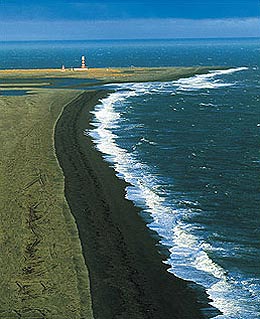
Lunes 26 de mayo de 2014
Chile boasts a privileged location in America's Southern Cone. Its continental coastline spans more than 4,300 kilometres equivalent to the distance between Madrid and Moscow and forms part of the Pacific Basin which is one of the fastes
Punta Dungeness Lighthouse, Straits of Magellan
On October21st 1520, a small fleet commanded by the Portuguese navigator Ferdinand Magellan, sighted for the first time the natural waterway that joins the Atlantic and Pacific Oceans.. Today the strait which bares its discovers name and is located at the southernmo
st part of Chile, continues to provide a safe and efficient maritime route to ships of all nations.

t growing economic regions in the world.
Chile is bordered by Peru to the north and by Bolivia and Argentina to the east. To the south, it extends towards the South Pole via the Chilean Antarctic Territory and to the west its maritime territory reaches far out into the Pacific Ocean, including Easter Island located 3,700 kilometres from the South American continental coastline
Chile's maritime territory, including the Exclusive Economic Zone and the Continental Shelf, covers more than 4.5 million square kilometres. According to international conventions, Chile's designated Zone of Responsibility for Search and Rescue occupies over 26.4 million square kilometres.
Chile's extensive coastline traverses a broad range of climatic conditions, from the aridity of the Atacama Desert in the north, to the heavily-forested cold and wet areas in the far south. Some areas such as the western approach to the Straits of Magellan have an average annual rainfall of over 5,000 millimetres.

The Atacama Desert located in Chile's north, is famous for being the world's driest desert. The northern coastline is also an important region for fishing and tourism.

South of the Chacao Channel Chile's territory is made up of a vast archipelago of over 5,000 islands which are characterized by having temperate to cold climatic conditions and abundant rainfall. A vast network of channels extends all the way to the famous Cape Horn and forms the main communication route for this region.

Further south, Chile's territory extends into the Drake Sea and part of the Antarctic Continent to the South Pole, between meridians 53˚W and 90˚W. Chile is continually involved in numerous research projects aimed at protecting human life and the region's fragile ecosystem.

The Chilean territory in the Pacific Ocean extends out 3,700 kilometres off the South American coast to Easter Island, home to one of the world's most fascinating cultures.